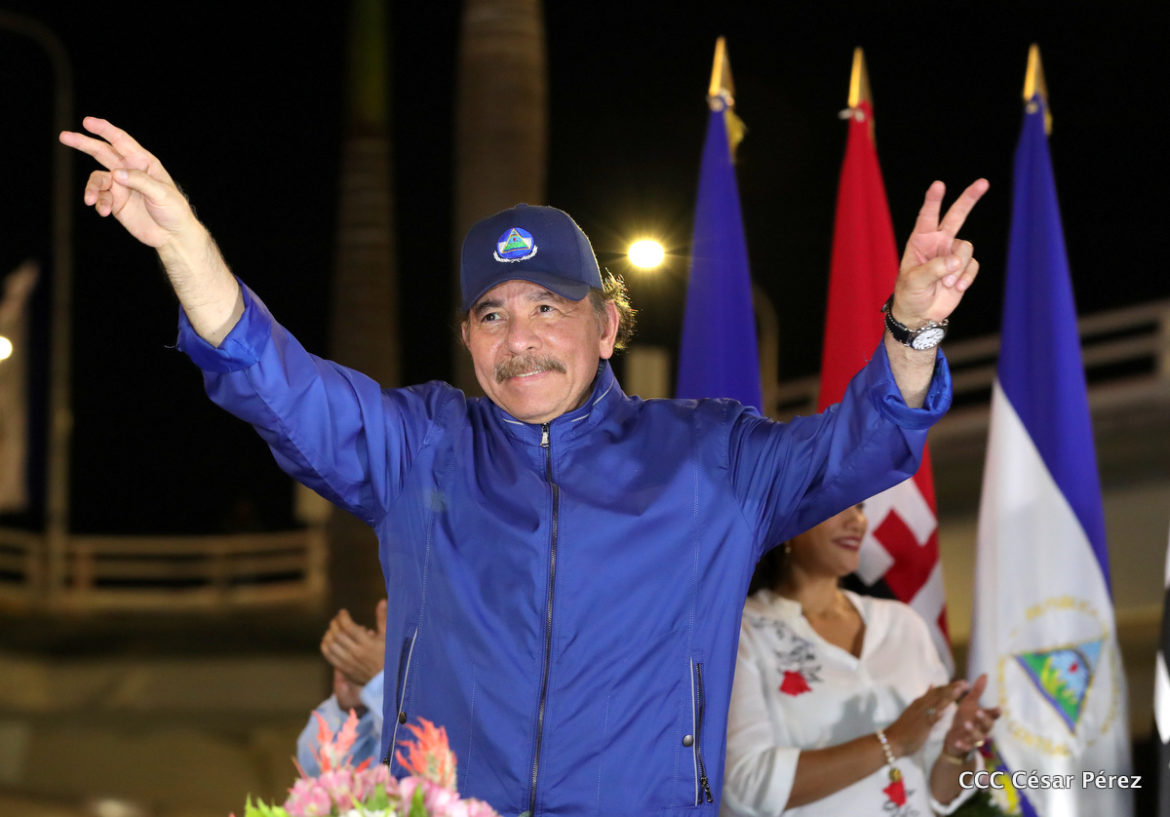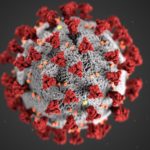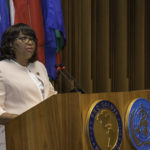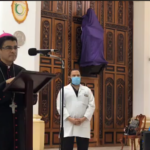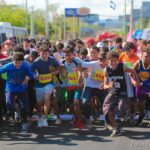The elderly man made his way down the line of his faithful, as a an old campaign song, set to the tune of “Give Peace a Chance” played in the background. He shook hands, exchanged pleasantries, and stopped for a selfie with a young woman. When he reached the grandstand, the Comandante waived to the small crowd, assembled at his feet. The national anthem played and he saluted.
Daniel Ortega presided over the ribbon cutting of the highway overpass at Nejapa, a public infrastructure work that Fidel Moreno, the secretary general of the city of Managua, described as “pioneering”.
“It is the first highway overpass that includes a Y junction at the top,” said Moreno, adding that the city had built overpass with taxpayer money and trust
Comandante-President, Compañera Rosario […] this project was constructed with taxpayer money paid by the citizens of Managua, and [built because of] the trust that the people of Nicaragua have on our government.
The crowed clapped and cheered politely, as Moreno concluded his remarks. They weren’t there to see him, but when Ortega rose to speak, the cheers were not noticeably louder or more enthusiastic. Maybe many were wondering if the Comandante would explain why he had acquiesced to releasing hundreds of people he had declared “golpistas”. Coup mongers.
But if anyone was expecting Ortega to share his thoughts, they would be disappointed. As he usually does, the Comandante delivered a speech that failed to specifically acknowledge perhaps the most important event of his entire presidency, the negotiations with the Alianza Civica. Instead, Ortega used the highway overpass as a center piece for his message. He was determined, against all odds, to protect the peace.
The overpass was a symbol of that determination, according to Ortega. “It took 30 months to build!” he said. “That means that work didn’t stop throughout 2018. Work continued. They couldn’t kill it. They could not destroy the spirit of the Nicaraguan workers and of the Nicaraguan families.
Ortega presented himself as a man of peace, whose only mission was to ensure that Nicaraguans would enjoy peace, stability, and security. “You have to care for peace every day. You cannot decree it. I would say that peace is the most ardent desire of everyone on earth. Peace! However, there is always Cain. Unfortunately, Cain is there. Cain has not disappeared. Cain is the devil. Yes, Cain is the devil. He is there. He doesn’t disappear!”
The people, with their faith in God, “would fight against Cain and against the demons, so we can have peace”, he indicated.
Ortega then added that anyone who stood in the way of peace was a demon. However, instead of identifying everyone who opposed his rule as a coup monger or a terrorist, he described demons as wreckers of havoc, stating that most Nicaraguans were not demons.
The speech was a departure from earlier invectives against protesters, the Catholic bishops, and the Alianza Civica. It also strayed from Ortega’s earlier usage of demonic imagery.
Indeed, only months earlier, during his July 19 address, Ortega had characterized the protesters who erected barricades throughout the country as satanic individuals, acting under the influence of an unseen and shadowy force, and intent on killing sandinistas. His speaking pattern, though still riddled with lengthy pauses, was less halting then.
On July 19, Ortega described the Alianza Civica that had recently come together as “the fake face of the coup”. In contrast, yesterday, he said “we don’t all think the same, but we have to come together, in spite of our political and ideological differences.”
Now, Ortega presided over the second ribbon cutting ceremony for the same work of infrastructure, while his envoys negotiate with the Alianza team.
The comandante could not bring himself to say the word negotiation, nor could he acknowledge that barely one day prior, his government had recognized that Nicaragua does, in fact, have political prisoners. His foreign ministry had said as much, in a letter sent to Luis Almagro, the secretary general of the OAS.
Reconocemos en nota del Gobierno de #Nicaragua un elemento fundamental xa comprometer a la Sría. Gral. @OEA_oficial en proceso de diálogo, condición necesaria xa la paz, justicia, respeto DDHH y democracia, objetivos fundamentales del pueblo nicaraguensehttps://t.co/XQbwRbsGQM pic.twitter.com/nxjNVYM0Hj
— Luis Almagro (@Almagro_OEA2015) March 21, 2019
“The Government of Reconciliation and National Unity will continue and conclude with the excarcelation of prisoners, including the release of all people that the Inter American Commission on Human Rights has identified as political prisoners”, reads the letter.
Ortega has agreed to release all of them within 90 days, but at dusk on a Thursday, he did not talk about that. Instead, he watched his wife and vice president, Rosario Murillo, cut the ribbon, and he declared the highway overpass “inaugurated”.
Again.
